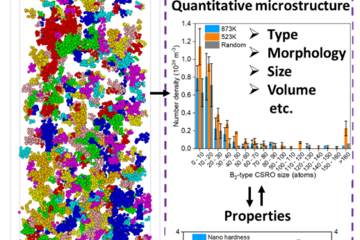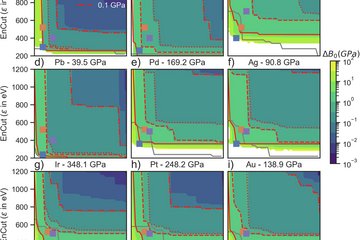All genres
141.
Talk
Segregation engineering in medium manganese steels. Workshop Integrated Computational Grain Boundary Engineering: The role of segregation, Graz, Austria (2016)
142.
Talk
Measurement of grain boundary chemistry and crystallography by atom probe tomography and correlated electron microscopy. Thermec 2016, Graz, Austria (2016)
143.
Talk
Atomistic understanding of structure and deformation of nano-sized kappa-carbide precipitates in light-weight steels. APT&M 2016, The 55th International Conference on Atom Probe Tomography & Microscopy, Gyeongju, South Korea (2016)
144.
Talk
Segregation engineering enables nanostructured dual-phase laminates via solute decoration and phase transformation at lattice defects. Colloquium lecture at Department of Mechanical Engineering, Technische Universiteit Eindhoven, Eindhoven, The Netherlands (2015)
145.
Talk
APT study of PtIr coating on cemented tungsten carbide substrate. European APT Workshop, Leoben, Austria (2015)
146.
Talk
Scale hoping simulations and real atoms. ICAMS Workshop ‘From Atoms to Continuum’,ICAMS, Ruhr University Bochum, Bochum, Germany (2015)
147.
Talk
Atom probe tomography study of internal interfaces in Cu2ZnSnSe4 thin-films. E-MRS Spring Meeting 2015, Lille, France (2015)
148.
Talk
Bulk Nanostructured Steels. Seminar at Ecole Polytechnique Federale de Lausanne (EPFL), Institute of Materials (IMX)
, Lausanne, France (2014)
149.
Talk
Joint crystallographic and chemical characterization at the nanometer scale by correlative TEM and atom probe tomography. Workshop: White-etching layers in ball and roller bearings, Informatik-Zentrum Hörn, Aachen, Germany (2014)
150.
Talk
Characterization of Ni- and Co-based superalloys using Atom Probe Tomography. International Workshop on Modelling and Simulation of Superalloys, Bochum, Germany (2014)
151.
Talk
Deformation-induced intermixing in a model multilayer system. Atom Probe Tomography & Microscopy 2014, Stuttgart, Germany (2014)
152.
Talk
Segregation of boron at prior austenite grain boundaries in a quenched steel studied by atom probe tomography. Atom Probe Tomography & Microscopy 2014, Stuttgart, Germany (2014)
153.
Talk
Designing bulk nanostructured high manganese steels by intregrating advanced characteriation and ab initio modeling. 2nd International Conference on High Manganese Steels - HMnS 2014, Aachen, Germany (2014)
154.
Talk
Atomic scale insights into Cu2ZnSnSe4 thin-film solar cells. Atom Probe Tomography & Microscopy 2014: APT & M 2014, Stuttgart, Germany (2014)
155.
Talk
Interfaces in Solar Cells. Microscopy & Microanalysis Conference 2014, Hartford, CT, USA (2014)
156.
Talk
On the Nano-scale Characterization of Thin-Film Solar Cells. Microscopy&Microanalysis 2014, Hartford, CT, USA (2014)
157.
Talk
Recent Advances in Understanding the Structures and Properties of Nanomaterials. Gordon Research Conference on Structural Nanomaterials, The Chinese University of Hong Kong, Hong Kong, China (2014)
158.
Talk
Characterization of internal interfaces in Cu(In,Ga)Se2 thin-film solar cells using correlative microscopies. 40th PVSC IEEE 2014, Denver, CO, USA (2014)
159.
Talk
Accelerated nucleation in nanocrystalline Fe–Si–Nb–B soft-magnetic alloy. ISMANAM 2013, 20th International Symposium on Metastable, Amorphous and Nanostructured Materials, Turin, Italy (2014)
160.
Talk
High temperature coevaporation of Cu2ZnSnSe4. E-MRS Spring Meeting 2014, Lille, France (2014)











